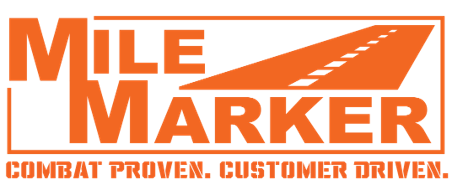A Good, Bad, Ugly Time For Businesses
August 16, 2021
The pandemic continues to bring us more “Unknowns” than Sad Hill.
What we thought was a waning impact of Coronavirus on businesses and life in general, has itself learned to pivot and morphed into a testament to the nature of anything virulent — adaptive, persistent, petulant.
Lots of bad and ugly, not much good.
For some organizations, the pandemic did bring some good. It was certainly a great time to be in the lexan sheet plastic business, the hand sanitizer business, or the nitrile glove business. Not a great time to be an operator of hotels, cruise ships or movie theaters.
Of late, Charles Dickens has been oft quoted, and one could easily say, depending on where you stood during the pandemic — it was, and still is, “the worst of times and the best of times.” A horrible time of sickness and loss for so many families, and for many, business struggles on top of personal struggles.
For some, though, the pandemic brought blessings, not curses. Some have lost, but many have profited.
It has been the luck of the draw.
Rather than quote Dickens, it seems to me that this time is less like Great Expectations and more like The Good, The Bad and The Ugly.
Those three words describe the various places and realities that businesses and organizations have found themselves in, prior to, and during the pandemic. I’d like to choose an optimistic phrase such as “after the pandemic,” but it seems as though it’s sounding like Greek pledge week in the coronavirus world, with popups like Delta, and now, Lambda, mutating and rearing their ugly heads.

There are businesses for which the “ugly” pandemic was the best thing that could have happened, such as bringing a much-needed cash infusion, payroll subsidies, and new customers via new channels — for example, traditional brick and mortar retailers that found ways to sell direct to consumers, or via Amazon.
In general, there was so much “bad” for some companies that quickly arrived in the form of severe impacts to their business models, it forced them to rapidly pivot and change the way they operate, and that’s a “good” thing.
Those of us in the advisory space were quick to realize that for many organizations that were struggling prior to Covid-19, the pandemic turned out to be a panacea, as government aid was a welcome and unexpected tide that floated many ships, even the sinking ones. Candidly, many businesses that probably should have locked their doors prior to Covid, found gold in a cemetery.
So, back to Sergio Leone’s masterful Spaghetti Western.
MGM’s The Good, The Bad and The Ugly grossed $25 million in 1966, and was by all measures, an artistic and commercial success, launching the career of Clint Eastwood, and further establishing the acting chops of Lee Van Cleef and Eli Wallach.
Why?
It was different than anything the world had ever seen. Wide shots, panoramic vistas, and the riveting music of the late genius Ennio Morricone, a man who I always deeply admired and feel is equally deserving of the title “il Commendatore,” as he is the Enzo Ferrari of sheet music. (Speaking of Ferraris, Clint Eastwood negotiated them as bonuses for his work in the Spaghetti Westerns. And, 10% of the profits.)
This Time’s Different
This pandemic is different than anything the world (within the last 103 years, anyway, since Spanish Flu) has seen. It has forced us to look at things with wide shots and different perspectives, often on Zooms, Teams, Google Meet screens that look less like Studio Cinecitta’ and more like Hollywood Squares.
We have been inexorably attuned to the body language nuances on video meetings with the same appreciation and intricacy as the eye contact before drawing one’s revolver.
The rapidly unfolding crisis motivated governments to quickly pivot themselves, launching many aid programs, to the extent that in commercial finance terms, there is a flood of liquidity in the markets right now. Companies buoyed by two rounds of PPP funds, and the FDIC is lenient with TDR’s (troubled debt restructurings) and there is unusually generous slack being given to commercial lenders.
Lenders are in “amend and extend,” “amend and pretend” or “pretend, amend, and extend” mode with credit borrowers.
There are a lot of cans getting kicked down the road, but the climate will intensify for commercial borrowers down the road, perhaps in Q1 ’22. Let’s face it, a flood of cash is a Godsend for many businesses that were wobbly pre-pandemic, but if they haven’t changed their modus operandi, they’re going to absorb and deploy the cash and be back where they were, perhaps in a more perilous position due to weakened KPI’s and fundamentals. (It’s the old, just buying a gym membership doesn’t magically get you in shape if you don’t go-thing)
Private equity is on the hunt for deals paying stupid multiples because it’s a competitive feeding frenzy, so it might be that an exit to a strategic or financial buyer could be a timely solution to a potentially lingering problem, and those sellers/owners might decide it’s time to get out. (Usually when PE overpays, it foreshadows a wave of future restructurings.)
We believe that for businesses that meet certain benchmarks, a reverse merger is a creative opportunity to get listed to the public markets in a cost-effective manner. Another option we see frequently is the strategic use of the ESOP as not only an employee retirement/retention tool, but also a potential mechanism for owners to “take some chips off the table.”
The demand for turnaround services is at a low, not just for boutique firms, but for big firms that went on a hiring spree in anticipation of this being a rewind to 2008–2011. It hasn’t happened and it won’t happen, in my opinion.
From the many commercial banks we speak with, they are confident that this isn’t 2008–2011, and that their portfolios are very clean. The question becomes what is the accuracy of the visibility they have into those credits and do any of those businesses in a vertical that might do worse post-pandemic, because behaviors or patterns have sprung back or shifted.
For example, I read recently of a large plant laying off 750 workers due a deep dive in demand for the one of the products they produce — face masks. The time to prepare a strategy, manage cash, optimize operations, dial in production, seek equity/debt investors, streamline your organization, manage cash on a rolling 13-week cash flow, isn’t when your bank tells you that you need to, it’s long before, it’s now. If the pandemic has taught businesses anything, it’s that you need to be ready for the proverbial rainy day, and that often the emphasis is on top line growth at all costs, but good old school profitability is critical for long term viability, flexibility and survival.
We’ll always preach to our clients, Revenue is Vanity, but Profitability is Sanity. A few of our clients’ businesses (retail and DTC) have roared and they will have a record year, enabling them to pay down their LOC substantially. I think the Subchapter V option will be a less expensive option to get those terminally ill businesses through an orderly bankruptcy, and I believe Article 9’s, 363’s will continue to percolate. There’s an incorrect notion out there that bankruptcy is a cheap reset button, but it’s never cheap and over the years we’ve seen that often an orderly, candid, communicative winddown can be a less damaging exit option that an expensive bankruptcy. The unsecureds seldom walk away with anything anyway.
So where’s the gold?
Who can forget Eli Wallach frantically running in the circular graveyard, looking for the grave that holds the $200,000 in Confederate gold, while Morricone’s “L’Estasio dell’Oro” (The Ecstasy of Gold) plays with the hauntingly beautiful voice of Edda Dell’Orso backed by a virtual cavalry of musical talent?
If the tune sounds familiar, odds are you heard it in one of three places, Metallica uses it to open their concerts, it’s featured in the Modelo cerveza commercials, and it’s been widely used in commercial advertising.
The pandemic has been for many businesses, a gold rush, for others, it’s been as empty as the dry graves Tuco was digging in on Sad Hill.
Like many things in business, “where you sit is where you stand,” and among the triangulated scenes in “TGTBTU” forever live the nuances of what isn’t being said, the eye movements, the stares, the twitching of Bad’s eyebrow, Good’s scowl or frown, or Ugly’s impish grin.
Much remains to be seen, but there will be changes on the periphery of the business arena. And, as far as what the future holds for businesses and the economy, given a mutating virus that is resilient as Eli Wallach’s Tuco, well, there’s likely to continue to be some Good, some Bad and some Ugly.




































































































































































































